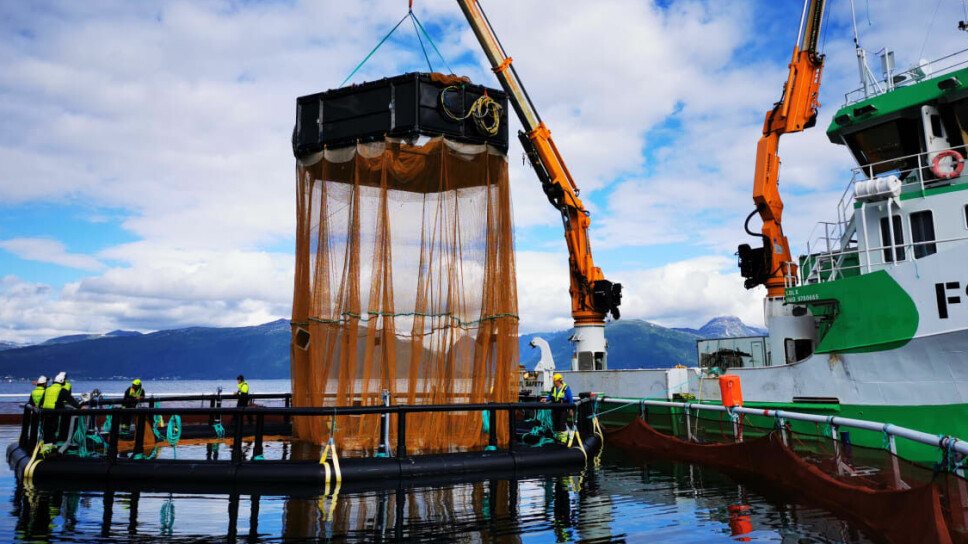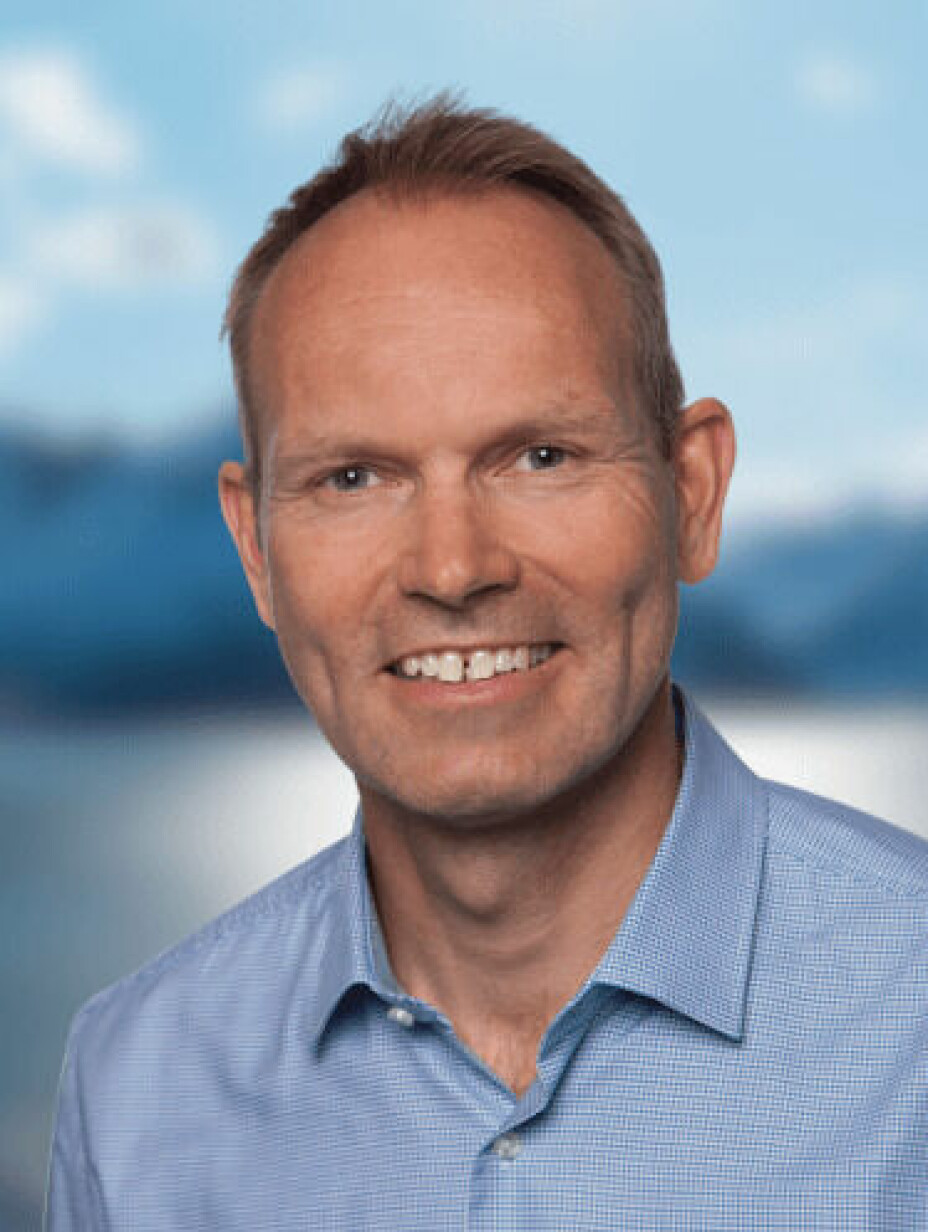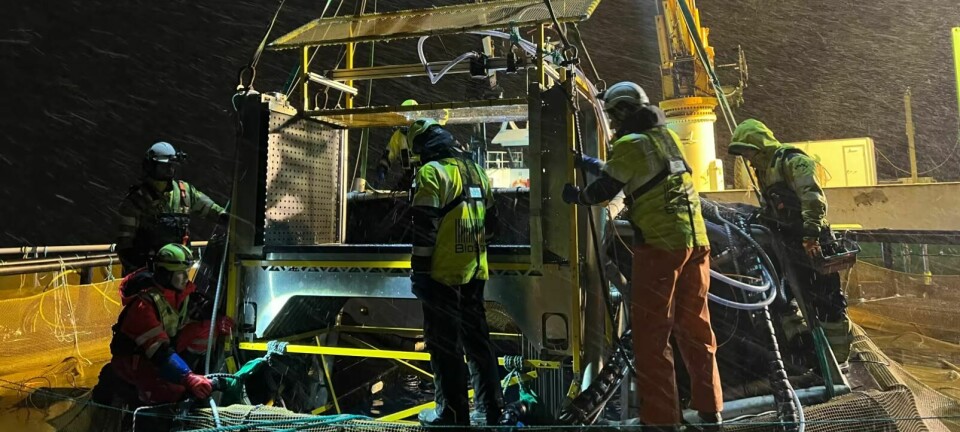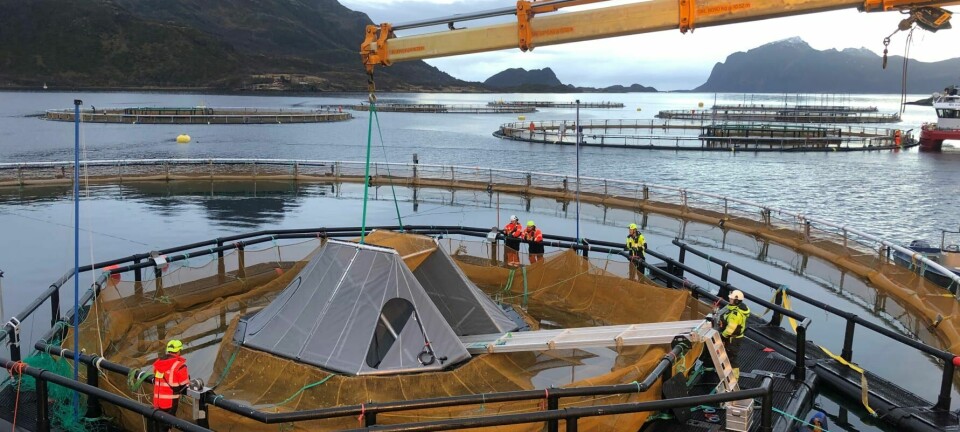
Cermaq tests third version of iFarm
Focus on sensors, data collection and machine learning in swim-through fish health checker
Salmon farmer Cermaq has stocked fish in pens equipped with the third version of its iFarm, which uses artificial intelligence to improve fish health and welfare.
The iFarm is being tested at the Øksnes and Steigen localities in Nordland, Norway, and it is Cermaq’s Hellarvika farm in Steigen that is using the latest iFarm iteration.
Cermaq is using the same farm team that was responsible for the first iFarm fish that was stocked in 2020.
“With the first version of iFarm, everything was new, and we had an incredibly steep learning curve, but as we got started with operations, we think it worked out quite well,” said Hellarvika site manager Tor Hansen in a press release.
“Now a number of adjustments have been made both to the set-up and to operations based on experiences gained in Øksnes, where we now have version two of iFarm, so it will be exciting to get started with operations, and to follow how the fish thrive in the third version.”
Portal
The iFarm is being developed to automatically assess every individual fish in a pen and remove injured or sick salmon. Fish are kept below the surface using a net roof. To reach the surface to fill its swim bladder, a fish must swim through a portal, or chamber, where a sensor can quickly scan, recognise and record data on that specific fish using recognition data based on each fish’s unique markings and structure.
Testing of version 1 mainly focused on establishing an understanding of how iFarm affects fish behaviour and gaining basic learning about the iFarm construction.
In the testing of version 2 there has been a lot of work with alternative versions of the sensor housing and operational adaptations, such as feeding the fish under the net roof, and to achieve efficient handling operations in a sea site with a lot of extra equipment in the net pens.
For version 3, the focus will be mostly on the sensors, on data collection and machine learning, and on further development of the mechanism that sorts out fish.

Key parameters
“At Hellarvika, we will concentrate on the sensor arrangement to retrieve images with good quality and follow up the annotation of key parameters such as fish ID, lice, growth and fish welfare in the net pen, and on further developing sorters,” said Geir Stang Hauge, managing director of BioSort, the company partnering Cermaq on the project.
“After a successful test of the first-generation sorter in net pens where we saw that the mechanical sorting mechanism worked with fish swimming through the system, we are now testing the second generation, and we will try to lead the fish from the sorter into another volume through a pipe. The aim is to validate that it is possible to take out individual fish according to specific sorting criteria.”
The sorter will eventually become autonomous, so that together with the sensor system in iFarm it can make its own decisions based on defined criteria, such as the discovery of lice or wounds. It is a complicated and extensive development process, which requires the development of precise machine vision, rapid processing of large amounts of data and interaction with a mechanical sorting unit with its own control systems.
“It’s complicated work, and it’s work that hasn’t been done before, so it’s demanding, but also very exciting,” said Hauge.
Cermaq, which is owned by Japanese industrial giant Mitsubishi, is one of the world’s biggest salmon farmers, producing almost 200,000 gutted weight tonnes of Atlantic salmon last year. As well as harvesting 92,000 gwt in Norway, Cermaq produced 79,000 gwt in Chile, and 20,000 gwt in British Columbia, Canada.
























































